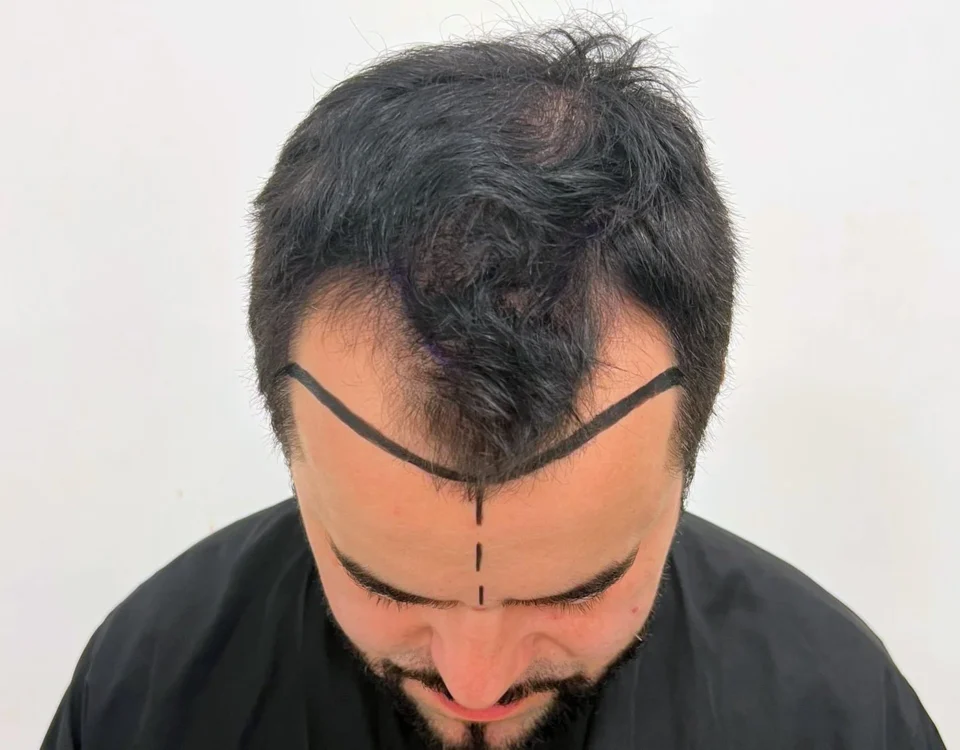
Hair Transplant Receding
19 April 2024
Where to get a hair transplant in Poland?
24 April 2024Androgenetic alopecia, also known as male pattern baldness, is the most common cause of hair loss in both men and women.
It is characterized by the gradual thinning of hair due to follicular miniaturization, which results in reduced hair thickness and length.
In advanced stages, hair loss can become significant, impacting self-esteem and quality of life for affected individuals.
Fortunately, the advancement of modern hair transplant techniques, such as Sapphire FUE and DHI, which are utilized at Dr Art Clinic in Wrocław, provides an effective solution to this issue.
Causes of Androgenetic Alopecia
Androgenetic alopecia is primarily caused by the effects of dihydrotestosterone (DHT) on sensitive hair follicles.
DHT, a derivative of testosterone, binds to androgen receptors in hair follicles, leading to their gradual miniaturization.
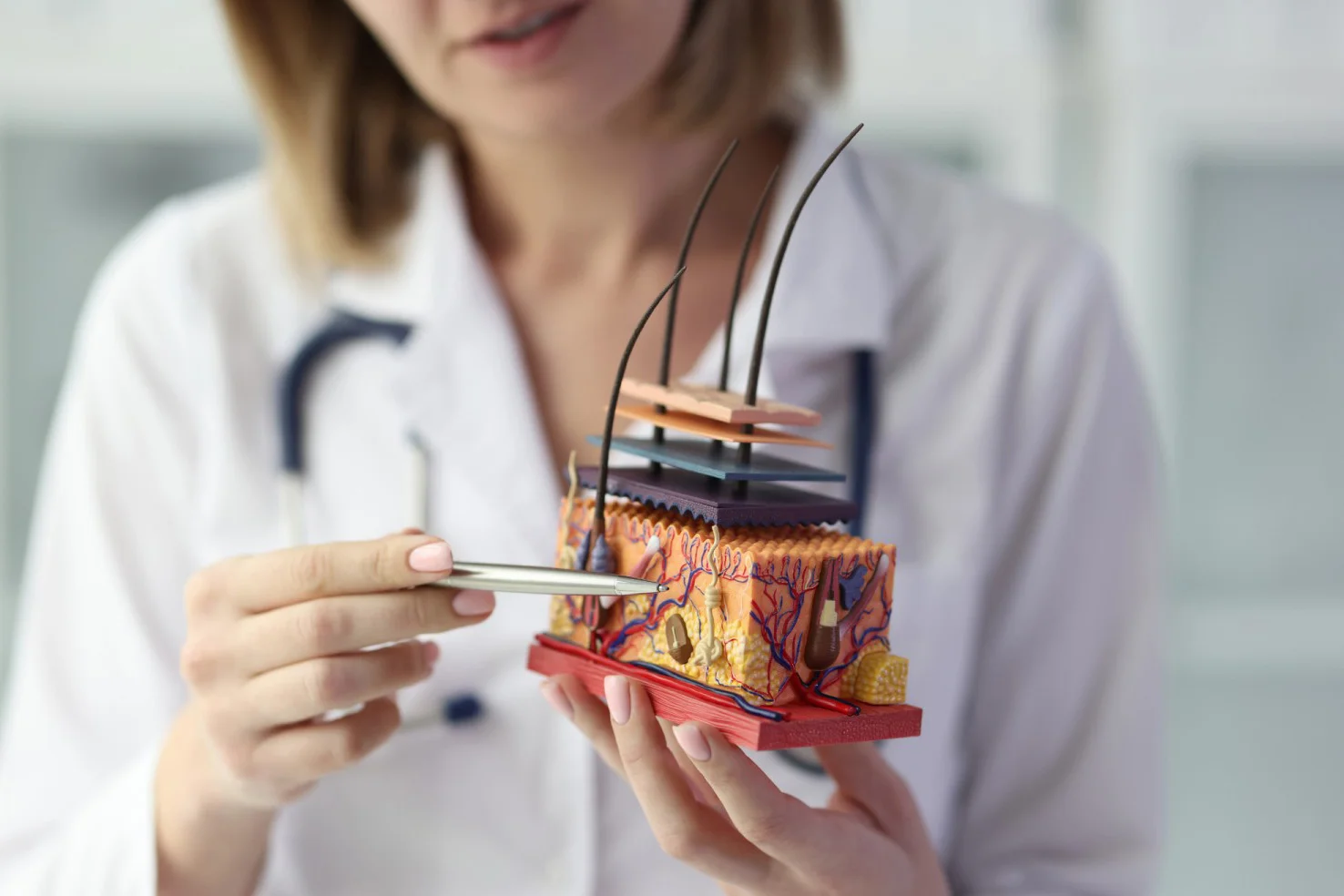
As a result, hair becomes progressively thinner until it eventually stops growing.
In men, androgenetic alopecia typically begins with a receding hairline and thinning at the crown, while in women, it often manifests as diffuse thinning across the scalp while maintaining the hairline.
Hair Transplant as an Effective Treatment for Androgenetic Alopecia
A hair transplant is currently the most effective solution for patients suffering from androgenetic alopecia.
At Dr Art Clinic, we offer the latest transplant techniques that ensure a natural appearance and long-lasting results.
Sapphire FUE Method: Precision and Natural Results

Sapphire FUE (Follicular Unit Extraction) is an advanced hair transplant technique that involves extracting individual follicular units from the donor area and transplanting them into the area affected by hair loss.
At Dr Art Clinic, this procedure uses sapphire blades to create ultra-precise micro-channels in the scalp, ranging from 0.6 to 1 mm in width.
Compared to traditional steel blades, sapphire blades minimize the risk of tissue damage, contributing to faster healing and a more natural appearance of transplanted hair.
This method allows for up to 5,000 grafts to be transplanted in a single session, equating to between 10,000 and 15,000 hairs.
Grafts are meticulously placed by experienced doctors to match the natural angle and growth direction of the patient’s hair, resulting in a seamless, natural-looking outcome that is hard to distinguish from natural hair.
DHI Method: Safety and Efficiency Without Shaving

Direct Hair Implantation (DHI) is another advanced hair transplant method offered at Dr Art Clinic, especially recommended for women and those who prefer not to shave their hair before the procedure.
Unlike the FUE method, DHI does not require pre-opening channels in the scalp.
Instead, grafts are directly implanted using a specialized Choi Pen tool, which simultaneously creates the channel and places the follicle.
The DHI method allows for up to 3,500 grafts, which is sufficient for most cases of moderate androgenetic alopecia.
Thanks to the precision of the Choi Pen, transplanted hair achieves excellent density and a natural appearance, and the procedure is less invasive, resulting in a shorter recovery time.
Innovative Vita Method: Graft Support
At Dr Art Clinic, each of the above methods is enhanced by our patented Vita method.
This method involves placing grafts in a specialized device where they are exposed to a cooling mist containing a saline solution enriched with vitamins, minerals, and amino acids.
This nourishment significantly increases graft survival and enhances transplant results.
Hair transplantation is an effective and long-lasting solution for those struggling with androgenetic alopecia.
With advanced Sapphire FUE and DHI methods, supported by the innovative Vita method, Dr Art Clinic in Wrocław offers patients the chance to restore a full, natural-looking hairline.
Our expertise, supported by world-class specialists from Turkey and skilled staff from Wrocław, guarantees the highest quality of service and patient satisfaction.
The trust of over 1,000 clients is the best proof of our methods’ effectiveness and our commitment to caring for each patient.
Hair Transplantation for Treating Androgenetic Alopecia – The Story of Mr. Piotr
Piotr, a 42-year-old mid-level manager in a large financial corporation, had enjoyed a thriving career, yet alongside his professional advancement, he began noticing a gradual decline in his appearance due to androgenetic alopecia.
His hair loss started around ten years ago, though Piotr initially dismissed it, assuming it was a temporary phase.
As time passed, his hair loss progressed, with a receding hairline and thinning at the crown becoming more visible.
This change began to affect his confidence both professionally and personally.
Initial Diagnosis
Concerned about the ongoing hair loss, Piotr sought a consultation with a dermatologist.
Following a thorough medical history and trichoscopic examination, the doctor confirmed that Piotr was suffering from male pattern hair loss, known as androgenetic alopecia.
Based on the Hamilton-Norwood classification, the level of Piotr’s hair loss was assessed as stage IV, indicating significant thinning in the frontal-temporal region and at the crown.
Treatment History
Before deciding on a hair transplant, Piotr tried various treatments for androgenetic alopecia.
These included minoxidil and finasteride, which he used for several years.
While he noticed some slowing of hair loss, the results fell far short of his expectations.
Additionally, Piotr was concerned about the long-term use of finasteride due to potential side effects.
Some people around him suggested scalp micropigmentation, but Piotr wanted a more permanent solution that would restore his natural-looking hair.
Decision for Hair Transplant
As his frustration grew with the lack of results from previous treatments, Piotr began considering a hair transplant.
After thoroughly researching available options, he scheduled a consultation at Dr Art Clinic in Wrocław, where he met with a team of doctors specializing in hair transplants.
After a detailed analysis, the medical team recommended the Sapphire FUE method, supported by the Vita method, as the best solution for Piotr’s case.
Procedure
The Sapphire FUE hair transplant procedure was performed in two stages.
In the first phase, approximately 4,000 grafts were harvested from the donor area (back of the head) and placed in the Vita device.
Using sapphire blades, the doctors created microscopic channels in the crown and front of the scalp, paying special attention to maintaining the natural hair growth angle and achieving the appropriate density.
In the second phase, the grafts were meticulously implanted into the prepared areas.
This process took around 8 hours, during which Piotr remained fully conscious and received local anesthesia.
Throughout the procedure, he could relax and listen to music, ensuring a comfortable experience
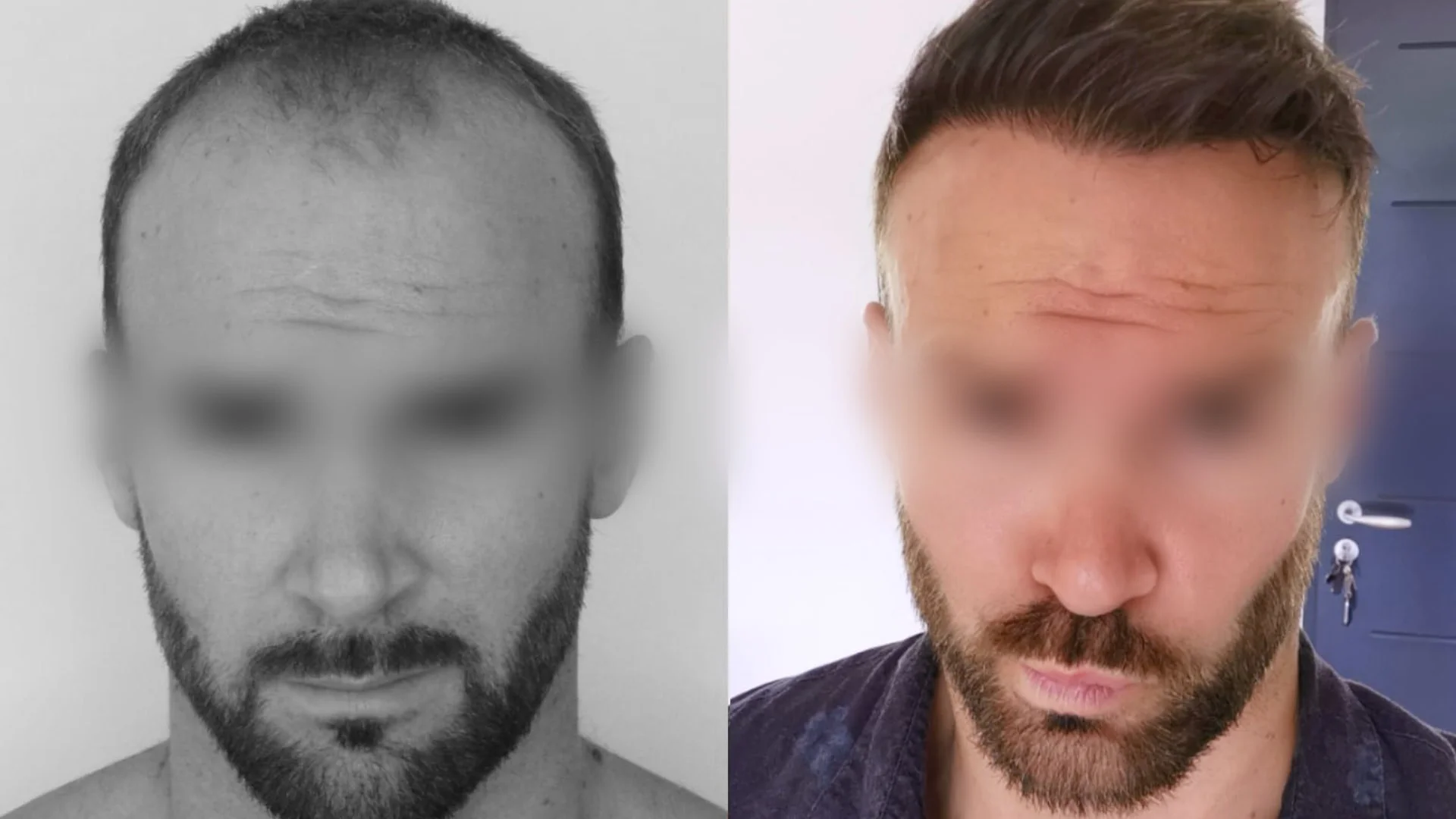
Recovery and Results
After completing the procedure, Piotr received detailed instructions on caring for the transplanted hair and the donor area.
The first few days post-transplant were crucial for ensuring optimal results, so Piotr diligently followed the doctors’ advice, avoiding physical exertion and sun exposure.
During the initial weeks, he experienced the typical telogen phase, where the transplanted hairs naturally shed—a normal step in the regeneration process.
New hair began to grow back around three months later, with full results visible 12-14 months after the procedure.
Piotr noticed a significant improvement in hair density and appearance. His hairline was restored, and the thinning areas on the crown were effectively covered.
Thanks to the Sapphire FUE method and the Vita technology support, the transplanted hairs grew naturally, both in direction and angle, making the results almost indistinguishable from his natural hair.
A year post-procedure, Piotr reflected that the decision to undergo a hair transplant was one of the best choices he had ever made.
Not only did he regain his hair, but he also recovered his confidence, which positively impacted his professional and personal life.
Piotr highlighted the professionalism of the Dr Art Clinic team and their personalized approach to his needs, which was key to his satisfaction with the procedure.
Piotr’s story demonstrates how effective hair transplants can be in treating androgenetic alopecia.
Through modern techniques like Sapphire FUE, supported by the Vita method, patients can achieve naturally looking, lasting results.
His case also exemplifies the importance of a personalized approach and a skilled medical team, which contributes significantly to patient satisfaction and therapeutic success.
Frequently asked questions
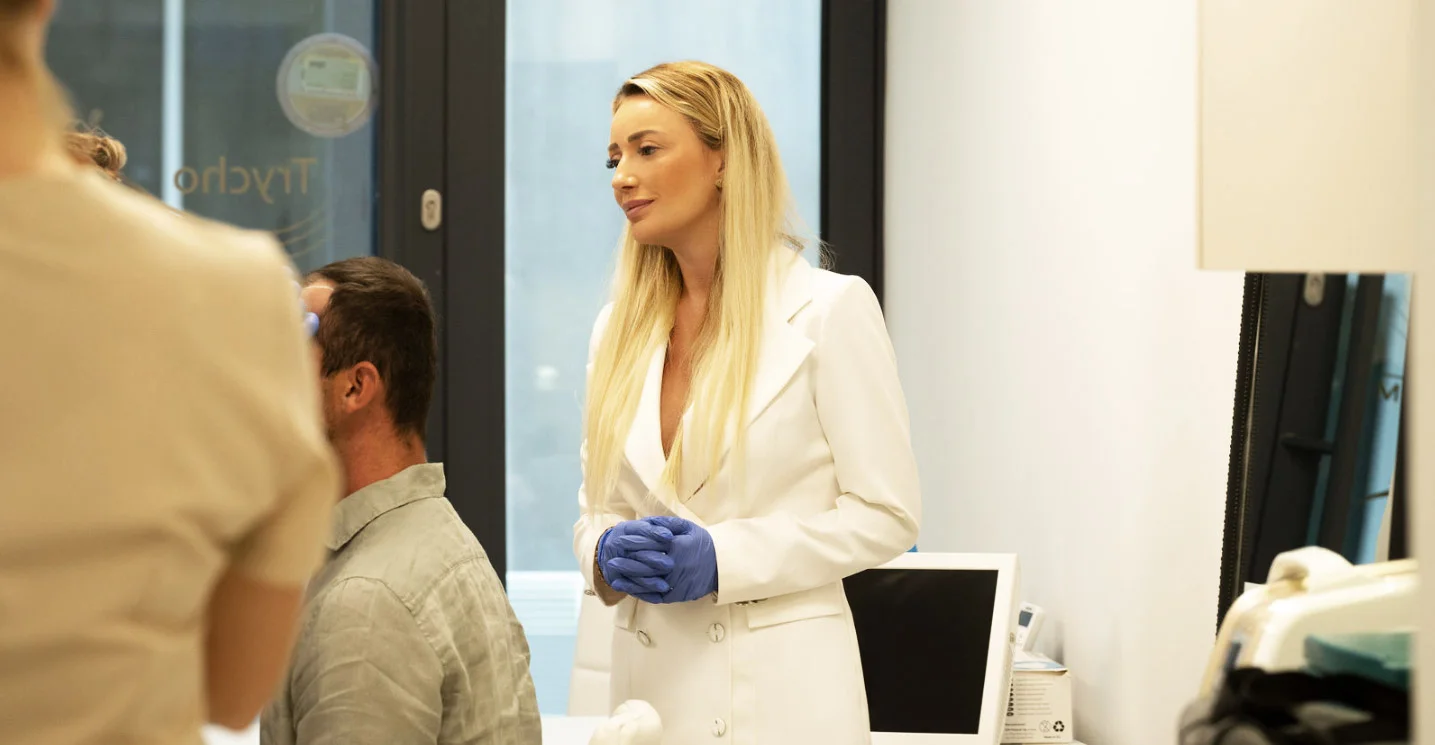
Is a Hair Transplant an Effective Solution for Androgenetic Alopecia?
Yes, a hair transplant is considered one of the most effective and long-lasting solutions for treating androgenetic alopecia.
Unlike other treatments, such as medications or topical therapies, a hair transplant provides permanent results.
Transplanted hair is taken from areas resistant to the effects of dihydrotestosterone (DHT), the hormone responsible for androgenetic hair loss.
As a result, the new hair is not affected by this process and will remain in place for life.
Techniques such as Sapphire FUE and DHI, used at Dr Art Clinic, ensure a natural appearance and adequate density of the transplanted hair.
What Are the Differences Between the Sapphire FUE and DHI Hair Transplant Methods?
Sapphire FUE and DHI are two advanced hair transplant techniques that differ primarily in the preparation and implantation of hair follicles:
- Sapphire FUE (Follicular Unit Extraction): In this method, individual follicular units are extracted from the donor area using a micromotor and then transplanted into the area affected by hair loss. A unique aspect of this technique is the use of sapphire blades to create channels for the grafts. The sapphire blades offer greater precision, reducing the risk of scarring and speeding up the healing process. This method is ideal for individuals who need a higher number of grafts, as up to 5,000 grafts can be transplanted in a single session.
- DHI (Direct Hair Implantation): In the DHI method, hair follicles are directly implanted using a specialized Choi Pen, which simultaneously creates the channel and places the graft. DHI does not require pre-opening of channels, making it less invasive with a shorter recovery time. The DHI method is often chosen by those who prefer not to shave their hair before the procedure, and it’s also popular among women, as it allows up to 3,500 grafts to be transplanted in a minimally invasive way.
Will the Transplanted Hair Look Natural?
Yes, transplanted hair can look very natural, provided the procedure is performed by skilled specialists using modern techniques and tools.
At Dr Art Clinic, each transplant is meticulously planned to achieve a natural-looking hairline, density, and growth direction.
For example, in the Sapphire FUE method, channels are opened at precise angles to mimic the natural hair growth pattern.
In the DHI method, the Choi Pen tool allows for the exact placement of each graft, also contributing to a natural final appearance.
Many patients find that after the full recovery period, it is challenging to distinguish the transplanted hair from the natural hair.
How Long Does Recovery Take After a Hair Transplant, and When Are Results Visible?
Recovery after a hair transplant varies depending on the method used and the individual patient’s characteristics.
Generally, the healing process takes around 7-10 days.
During this period, patients should avoid physical exertion, excessive sun exposure, and other external factors that may affect skin healing.
The transplanted hair may initially shed within the first few weeks after the procedure, a natural phase called the telogen phase.
New hair begins to grow back approximately 3-4 months after the transplant, with full results typically visible after 12-14 months.
Over this period, the hair gradually becomes denser and more noticeable, leading to the final desired outcome.
Is a Hair Transplant Permanent, and Does It Require Further Treatment?
Transplanted hair is generally permanent because it comes from donor areas that are resistant to the effects of DHT, the hormone responsible for androgenetic alopecia.
This means transplanted hair should not fall out in the same way as hair from DHT-sensitive areas.
However, it’s important to understand that a hair transplant does not stop the progression of hair loss in other, untreated areas of the scalp.
As a result, some patients may require further treatment or additional transplants if hair loss continues over time.
Complementary treatments, such as the use of minoxidil or finasteride, may be recommended by a doctor to protect existing hair and slow further thinning.
Who Is a Good Candidate for a Hair Transplant for Androgenetic Alopecia?
A good candidate for a hair transplant is someone who experiences androgenetic alopecia and has a sufficient amount of healthy, DHT-resistant hair follicles in the donor area (typically the back and sides of the head).
Candidates should have realistic expectations regarding the results of the procedure and be in good general health.
Younger individuals whose hair loss is in the early stages may be advised to wait until their hair loss stabilizes before undergoing a transplant.
A thorough consultation with a doctor is essential before a transplant, during which the health of the hair, degree of hair loss, and potential benefits of the procedure are evaluated.
Is a Hair Transplant Painful?
A hair transplant is generally not painful, as it is performed under local anesthesia.
Patients may feel slight discomfort during the administration of anesthesia, but the actual process of extracting and transplanting hair follicles is painless.
After the procedure, some patients may experience mild tension, itching, or discomfort in the donor and recipient areas, which usually subside within a few days.
If necessary, the doctor can prescribe pain relief medication to ensure patient comfort during the recovery period.
Can Hair Transplants Be Performed on Women with Androgenetic Alopecia?
Yes, hair transplants can be effectively performed on women suffering from androgenetic alopecia.
In women, androgenetic alopecia often manifests as diffuse thinning across the scalp rather than a receding hairline, as seen in men.
The DHI method is often preferred for women since it allows hair transplantation without the need for shaving.
As with men, women must have a suitable donor area to ensure the success of the procedure.
Hair transplants for women can significantly enhance hair density and hairstyle aesthetics, boosting confidence and overall self-esteem.
What Are the Potential Complications and Risks Associated with Hair Transplants
A hair transplant is a surgical procedure, and like any surgery, it carries certain risks
Common complications include infection, scarring, swelling, redness, and discomfort in the donor and recipient areas.
More serious complications, such as skin necrosis, asymmetry in the transplanted area, or suboptimal hair growth, are very rare.
Choosing an experienced clinic, such as Dr Art Clinic, and strictly following postoperative care instructions help to minimize risks and achieve optimal results.
What Are the Costs of Hair Transplants, and What Factors Influence Them?
The cost of a hair transplant varies depending on several factors, such as the transplant method (Sapphire FUE or DHI), the number of grafts needed, the experience of the medical team, and the clinic’s reputation.
In Poland, the cost typically ranges from several to tens of thousands of pln.
This price includes the initial consultation, the procedure, postoperative care, and any follow-up appointments.
It’s worth noting that a hair transplant is a long-term investment that can significantly improve a patient’s quality of life.
At Dr Art Clinic, patients receive transparent, individually tailored pricing that addresses their specific needs and expectations, ensuring a comprehensive approach to achieving desired outcomes.
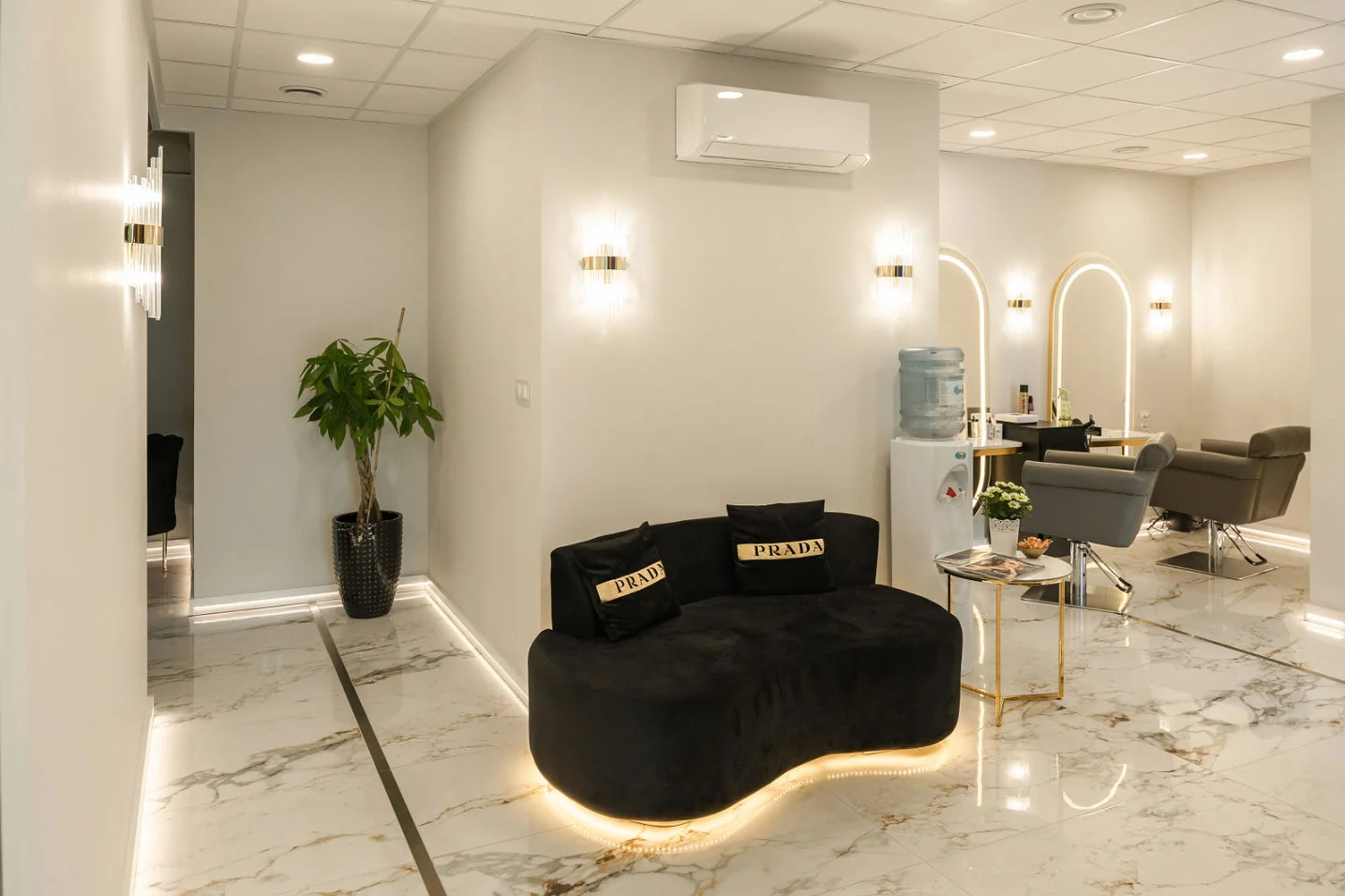
A hair transplant is an advanced and effective solution for combating androgenetic alopecia, a condition affecting both men and women.
Thanks to modern techniques like Sapphire FUE and DHI, patients can regain not only hair density but also confidence and satisfaction with their appearance.
At Dr Art Clinic , our procedures are performed with the utmost precision by world-class specialists, ensuring results of exceptional naturalness and durability.
The combination of innovative methods with a personalized approach for each patient provides not only aesthetic but also long-lasting outcomes.
We warmly invite you to visit our clinic, where our specialists will conduct a thorough diagnosis, discuss the details of your treatment plan, and answer any questions.
Together, we can plan a tailored solution to help you regain a natural-looking hairline and improve your quality of life.






